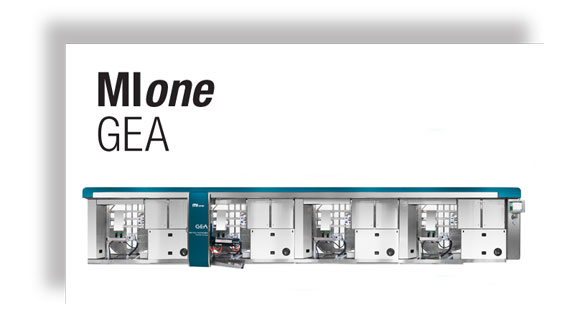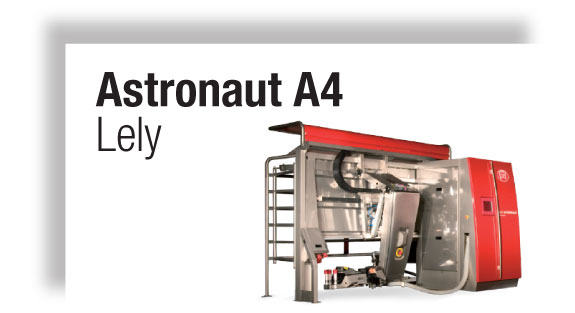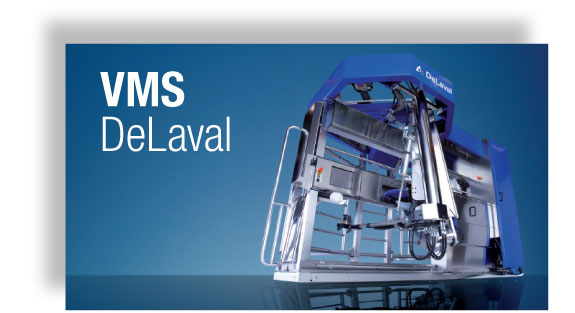Progressive Dairyman compiled the map below using installation data from robotic milking companies highlighted below. States with at least one robotic milking installation of any kind are shaded in purple. The next most likely states to see a robotic milking installation, according to the contributing companies, are shaded in light purple.

Peter Langebeeke, President of Lely North America.

Mark Futcher , Marketing Manager & Automatic Milking for DeLaval North America.
 Steve Pretz , national sales manager with GEA Farm Technologies .
Steve Pretz , national sales manager with GEA Farm Technologies .

What is most interesting to you about the rate of adoption of robotic milking technology in the U.S.?
LANGEBEEKE: More than 20 years ago, we pioneered robotic milking equipment and installed the world’s first robotic milker in the Netherlands. In 2000, Knigge Farms in Omro, Wisconsin, became the first robotic dairy in the U.S.
Today, we’ve sold over 15,000 Lely Astronauts worldwide and opened our doors to Lely’s North American headquarters and production facility in Pella, Iowa. It’s exciting to see such growth and anticipate the future of robotics in the U.S.
FUTCHER: DeLaval has been actively engaged in the research and development of robotic milking solutions for about 30 years. A subsidiary of DeLaval installed the first on-farm robot in Holland in 1992.
From those early origins, we as an industry have significantly embraced automatic milking. The adoption rate of robotic milking in the U.S. is consistent with that of other automated technologies such as automatic sorting, heat detection systems, electronic milk meters and automatic calf feeders. These are all trends with a beginning but without end.

However, it has been my experience that in many cases, the driving factors for robotic milking purchases are equally based on improved lifestyle, extending the dairyman’s career in the business, ability to work off the farm and most commonly, the reduction/elimination of non-family labor.
(GEA Farm Technologies automated milking machine pictured above right.)

Are we still in the early-adoption phase for this technology?

LANGEBEEKE : For many, automation is a completely new and different way to milk cows and manage herds.
Experience tells us that the total number of robotic dairy operations will continue to grow worldwide, and this growth will continue to spur further market growth as more dairy producers continue to make the transition to automation.
(Lely automated milking machine pictured at right.)
FUTCHER : By the numbers, a small fraction of dairy farms have robots today; however, it’s clear that with persistent labor, feed and fiscal pressures, more and more dairy producers are investigating automatic milking as “the” next advancement on the dairy. We believe that all of us, collectively, will continue seeking ways to do more with less. Robots can serve as means to this end.
PRETZ: Certainly we are still in the early stages. To move beyond this a couple of key things need to happen:
- Technological advancements in the design and function of the robotic milking concept needs to happen to make it applicable to the 2 percent of the dairy producers who produce 55 percent of the milk in the U.S. We really need to think fundamentally differently, so that the robotic technology of the future can enable their dairy business for growth and profitability.
- Systems need to be low maintenance and most service needs to be completed by the dairyman. This will require training the customer and making maintenance as easy as conventional milking systems.
- Total cost of ownership needs to be firmly established and be predictable.
- The question of “can I make more money owning this equipment” needs to be a clear and easy “yes” for most producers.

Predict how long it will be before there are milking robots in each of the top 15 dairy states.
LANGEBEEKE : With robotic milking in over half of the top 15 dairy states, we’re well on our way. Interest and awareness increases each day and installations are more frequent. With no “crystal ball” available, it is difficult to say how long before robotics will reach these areas. What we do know is that interest continues to come in from all over the U.S. and Canada.

FUTCHER: Each year, more and more states will actively embrace robotic milking. Predicting when the top 15 dairy states will adopt robotic milking depends on how a milking robot is defined.
We have our single-box unit, the Voluntary Milking System (VMS), already operating in a number of the top 15 dairy states with installations ranging from one unit to 20 units.
Is a single-box unit the best fit for every dairy type? Probably not – that’s why we’re excited for the opportunity to soon bring high-capacity automated milking in the form of DeLaval AMR (Automatic Milking Rotary) to North America.
(DeLaval automated milking machine pictured above right.)
PRETZ: My best guess:
California: 2, Wisconsin: 0, Idaho: 2, New York: 0, Pennsylvania: 0, Texas: 2, Minnesota: 0, Michigan: 0, New Mexico: 5, Washington: 0, Ohio: 0, Arizona: 4, Iowa: 0, Indiana: 0, Colorado: 0
*A 0 indicated a milking robot is already in or planning to be in that state.

Will robotic milking technology ever catch up with the industry’s larger herd sizes (1,000-plus cows)?
LANGEBEEKE : Yes. Increasing labor costs and benefits from individual cow management are just two reasons why large farms are becoming more aware that automation ensures the best ROI.
FUTCHER: Absolutely. In some cases, we are already there!
PRETZ : In some cases it has already, with today’s robotic technology some larger herds are making it work. However, large producers, which are the core of our business, are increasingly driven on this goal: labor cost and availability. Therefore, robotic technology needs to advance even more in its design and application to make it a sound business choice for these producers.

How did you predict which states are the next most likely ones to see one of your robotic milking units installed?
LANGEBEEKE : Robots started in the Midwest and Northeast and are now moving into other highly cow-populated areas. Because of the 11.6 percent increase in total milk production over the past five years in the West, we believe robotic milking will experience strong installation numbers in this region in the future.
FUTCHER: It’s a combination of three things:
- The level of customer interest received
- The state’s regulatory acceptance of our system
- Our ability to service and support potential customers in the region
PRETZ: This typically depends on the availability of labor and relative herd sizes. PD







